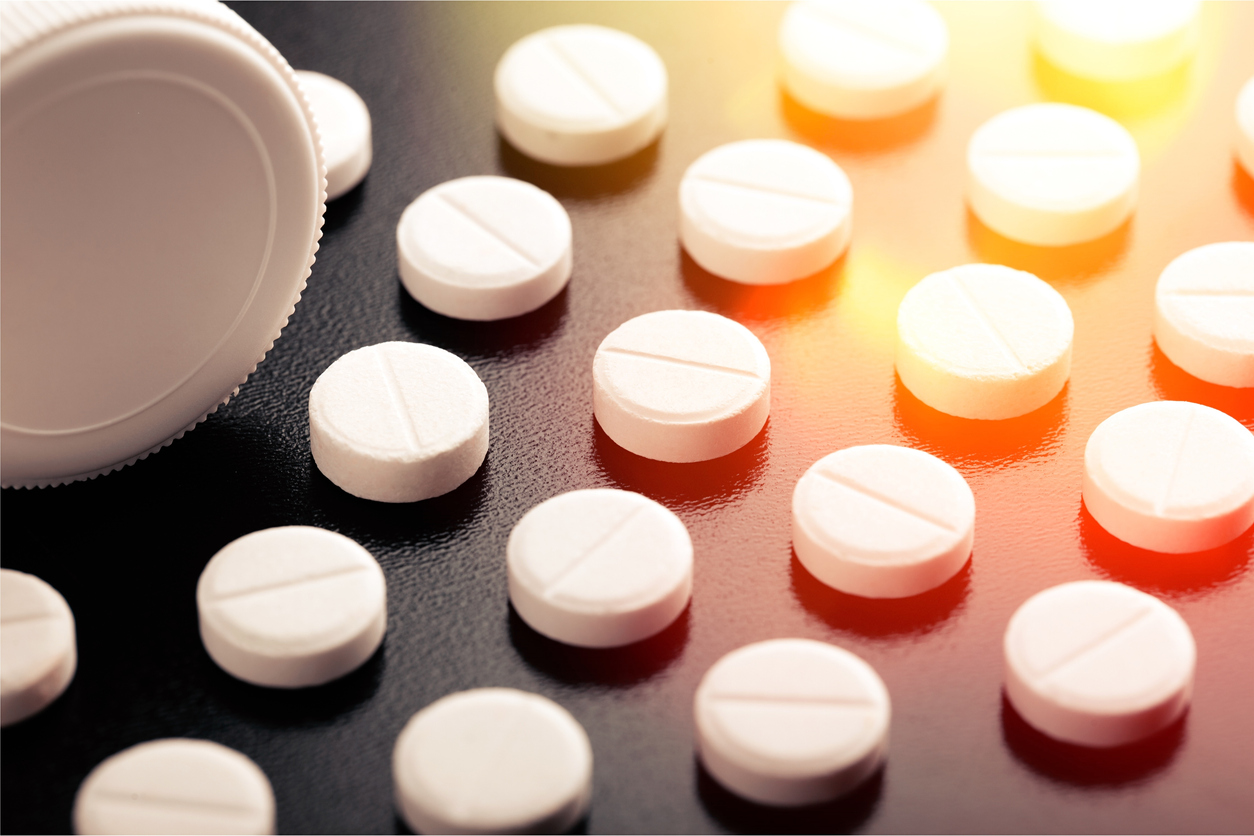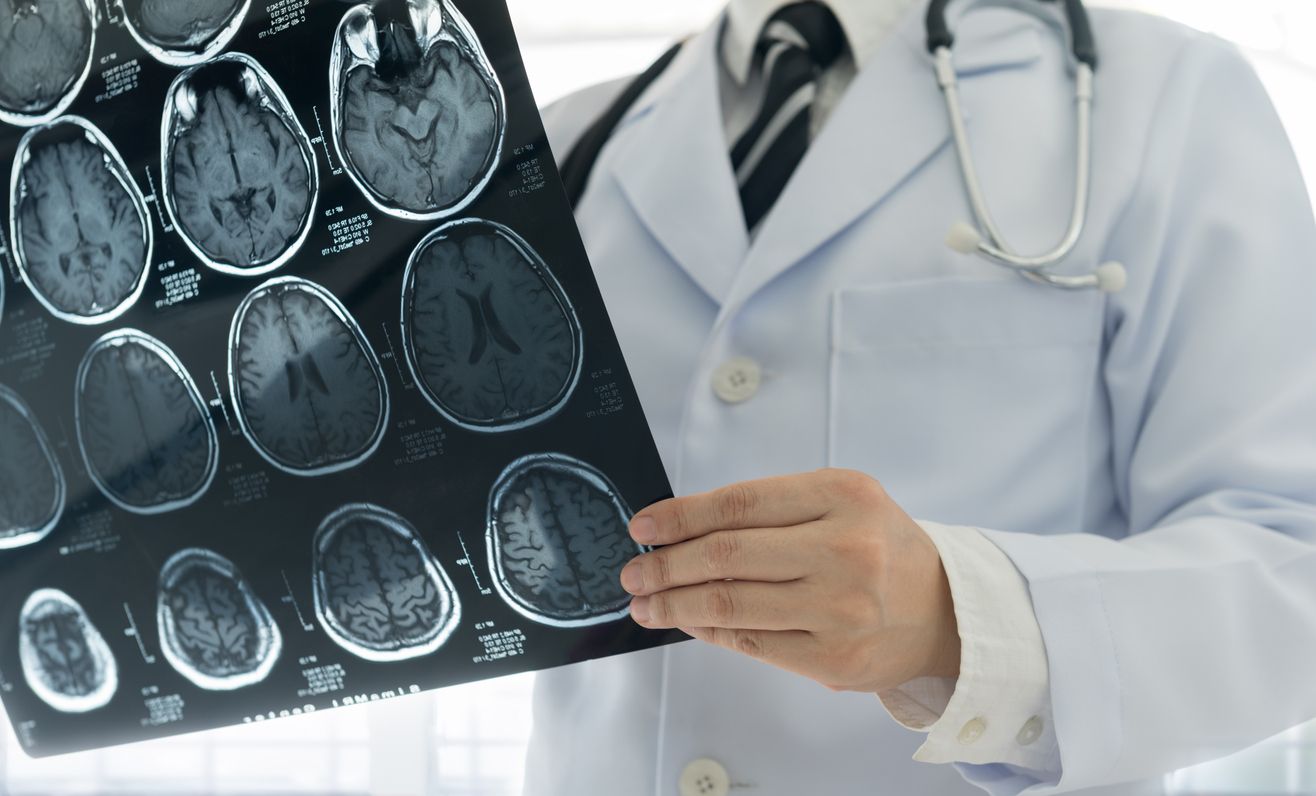This is How Adderall Affects Your Brain
The popular attention deficit/hyperactivity disorder (ADHD) medication Adderall has been making headlines recently: Due to supply chain issues, the United States has been facing a major shortage of the drug, and people who rely on it are alarmed that the medication may be increasingly difficult to obtain.
Adderall use is extremely common, and more people are taking it all the time: In 2021, according to The Wall Street Journal, Adderall prescriptions were up by more than 10 percent, to 41.4 million. But what does it actually do to your brain? We asked Aaron Lengel, PharmD, a licensed pharmacist and assistant professor at the University of Toledo College of Pharmacy and Pharmaceutical Sciences. Read on to find out why using this medication could permanently change the way your brain works.
READ THIS NEXT: If You’ve Taken Tylenol With These Common OTC Meds, Get Your Liver Checked.

“Adderall is a central nervous system stimulant medication that is used to treat attention deficit/hyperactivity disorder (ADHD),” Lengel explains.
WebMD adds that Adderall is what’s known as a combination drug, because it contains the stimulants dextroamphetamine and amphetamine. “It can help increase your ability to pay attention, stay focused on an activity, and control behavior problems,” says the site.
Adderall addresses hyperactivity and impulsivity, as well as difficulty focusing and paying attention, by affecting chemicals in the brain—specifically, increasing dopamine and norepinephrine, explains Healthline. “Dopamine helps the brain reinforce rewarding behaviors,” their experts write. “Norepinephrine affects your heart rate, blood vessels, blood pressure, and breathing [and] can also affect your blood sugar.”

The Centers for Disease Control and Prevention (CDC) reports that ADHD is a common neurodevelopmental disorder. “It is usually first diagnosed in childhood and often lasts into adulthood,” their experts write, noting that ADHD in adulthood can sometimes go undiagnosed. “Children with ADHD may have trouble paying attention, controlling impulsive behaviors (may act without thinking about what the result will be), or be overly active.” The CDC says a combination of therapy and medication works best to treat ADHD.
“In 1990, 600,000 children were on stimulants, usually Ritalin, an older medication that often had to be taken multiple times a day,” The New York Times reported on Oct. 2016. “By 2013, 3.5 million children were on stimulants, and in many cases, the Ritalin had been replaced by Adderall, officially brought to market in 1996 as the new, upgraded choice for A.D.H.D.—more effective, longer lasting.” In the mid-2000s, adults were “the fastest-growing group receiving the drug,” The New York Times wrote.
RELATED:
For more up-to-date information, sign up for our
daily newsletter.

Adderall is known for having wide-ranging side effects. “It is a stimulant that can raise blood pressure and heart rate [and] can worsen underlying cardiovascular conditions,” warns Lengel. “People who have heart conditions should avoid Adderall.”
And while Adderall has proved to be effective in treating certain conditions, the medication “has the potential to be abused and should not be used by people with a history of drug abuse,” says Lengel. The main reason the drug is addictive is due to its effects on the brain.
“People abuse Adderall because it produces feelings of confidence, euphoria, increased concentration, and a suppressed appetite,” says the Addiction Center. “These effects make Adderall a go-to choice for anyone looking for a boost in physical or mental performance.”But what exactly is happening in the brain when Adderall is taking effect?

Adderall’s impact on the brain is complex. “Amphetamines unleash dopamine along with norepinephrine, which rush through the brain’s synapses and increase levels of arousal, attention, vigilance and motivation,” The New York Times reported. “As a person begins to overuse a substance, the brain—which craves homeostasis and fights for it—tries to compensate for all the extra dopamine by stripping out its own dopamine receptors,” which then leads the person to need amphetamines to produce the good feelings that once were produced only from naturally-occurring dopamine.
“The vanishing dopamine receptors also help explain the agony of withdrawal,” The New York Times wrote. “Without that favored substance, a person is suddenly left with a brain whose capacity to experience reward is well below its natural levels.”
Long-term Adderall use may have a permanent effect on your brain. “It’s possible that taking Adderall may lead to a decline in brain function later in life,” according to GoodRx. “Some researchers suggest that the brain could change its wiring after years of stimulants. This could result in a decline in brain function (e.g., memory loss) with rising age.”
Best Life offers the most up-to-date information from top experts, new research, and health agencies, but our content is not meant to be a substitute for professional guidance. When it comes to the medication you’re taking or any other health questions you have, always consult your healthcare provider directly.
" Conservative News Daily does not always share or support the views and opinions expressed here; they are just those of the writer."





Now loading...